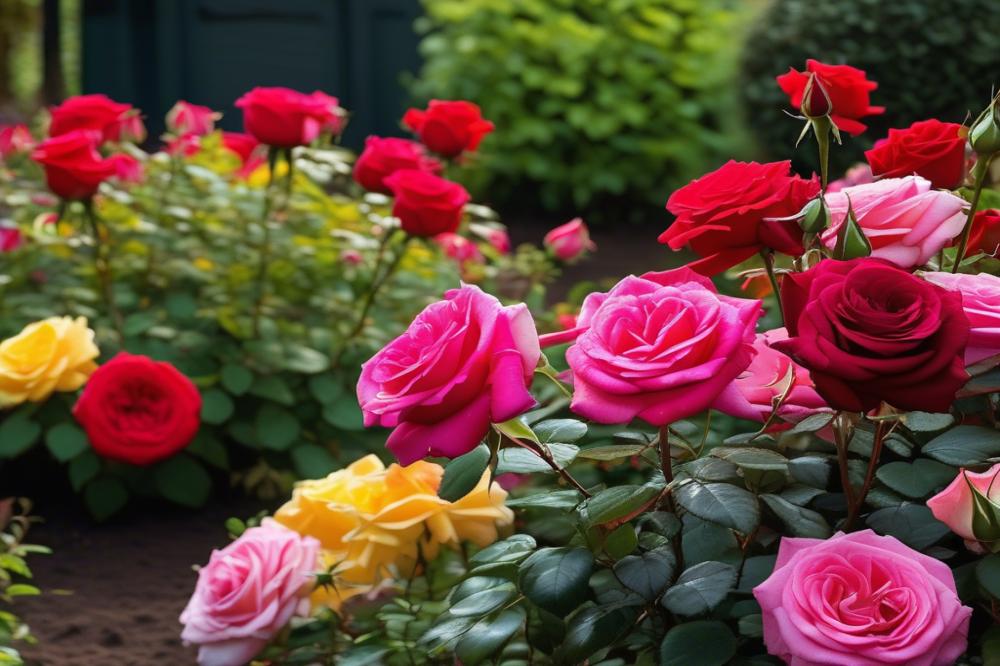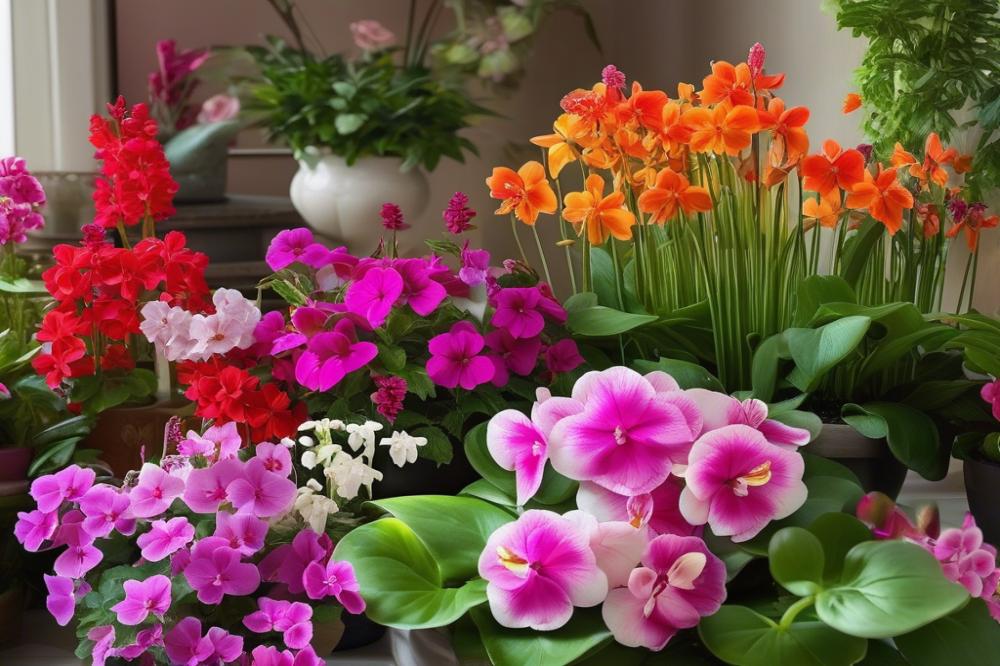The Best Soil for Growing Healthy Roses
Growing healthy roses begins with one crucial element: the soil. Without the right foundation, even the most dedicated rose gardener might find their efforts in vain. Soil acts as the lifeblood for roses, impacting growth, health, and blooming potential. Poor soil can lead to stunted plants and lackluster blooms. Conversely, the right mixture can transform a garden into a vibrant display of colors and fragrances.
Many factors come into play when considering the perfect potting mix. organic matter is essential; it improves soil structure and provides vital nutrients. A good mix should contain compost to encourage beneficial microorganisms. This nourishment is what keeps roses thriving. Likewise, mulch adds another beneficial layer, helping retain moisture and suppress weeds.
Drainage is another critical aspect. Roses do not thrive in overly wet conditions. Clay soil can hold moisture too well, while sandy soil may drain too quickly. Loamy soil strikes a balance, offering good drainage while retaining enough moisture and nutrients. The composition of soil can also affect the pH level, which influences how well plants can absorb nutrients.
Healthy roses demand a nutrient-rich environment. soil for roses should be well-prepared and regularly amended. Understanding the unique needs of your soil can lead to thriving plants. Investing time into choosing the right soil guarantees bountiful flowers. Ultimately, achieving vibrant blooms starts underground, where the roots establish themselves and gather everything they need to flourish.
Understanding soil for roses

Soil is more than just dirt. It’s a living mixture of minerals, organic matter, air, and water. This combination plays a vital role in the health of plants, especially roses. Healthy soil provides essential nutrients and supports root development. When the right soil is chosen, roses can thrive like no other.
The ideal soil composition for roses often involves a balanced mix. Loamy soil is considered the best because it combines sand, silt, and clay. This combination offers excellent drainage while retaining moisture. A portion of organic matter, like compost or well-rotted manure, can enhance this mixture. Adding organic material improves fertility and supports beneficial microorganisms.
Drainage is crucial in maintaining healthy roots. If water stands in the soil, it can lead to root rot. Therefore, sandy soil might be beneficial in some situations, allowing excess water to escape easily. However, too much sand can lead to low nutrient retention. Clay soil, on the other hand, retains moisture but can become compacted, restricting air flow to roots.
In addition to texture, pH level is essential for rose health. Most roses prefer a slightly acidic to neutral pH, around 6.0 to 7.0. Testing the soil pH helps gardeners adjust it, if necessary. Amendments like sulfur can lower pH, while lime can raise it. This adjustment leads to better nutrient absorption.
To further enhance soil for roses, mulch is beneficial. A layer of organic mulch can conserve moisture, suppress weeds, and improve soil texture as it breaks down. This practice not only supports plant growth but also prevents erosion. Healthy soil, combined with proper care, leads to robust, beautiful blooms.
Types of Soil and Their Suitability for Roses

growing roses requires understanding the type of soil used. Different soils offer unique properties that can impact the health of your plants.
Analysis of Sandy Soil and Its Drainage Properties
Sandy soil has large particles, which means it drains quickly. This can be a benefit in preventing water from pooling near the roots. However, it also presents challenges. Nutrients wash away easily in sandy soil. The low water holding capacity can dry out quickly, making it essential to add organic matter. Using potting mix enriched with compost can improve its fertility. Thus, while the drainage is excellent, constant monitoring is necessary to avoid dryness.
Examination of Clay Soil and Its Water Retention Challenges
On the opposite end, clay soil consists of tiny particles that clump together. This soil retains water, which might sound advantageous. However, too much moisture can lead to root rot. Furthermore, heavy clay can become compacted, making it hard for roots to grow and access oxygen. To counteract these issues, adding mulch and organic materials can help lighten the soil texture. Regular amendments can improve overall structure, but patience is crucial when working with clay.
Description of Loamy Soil as the Ideal Choice
Loamy soil is considered the best option for roses. This balanced mix of sand, silt, and clay provides an ideal environment. It holds moisture but drains well at the same time. With a neutral pH level, loamy soil encourages optimal nutrient availability. Rich in organic matter, it supports healthy root development and vibrant blooms. Roses thrive in this environment because they get what they need without struggling.
Comparison of the Three Soil Types for Rose Growth
When comparing sandy, clay, and loamy soil, the benefits of loamy soil become clear. While sandy soil provides excellent drainage, it requires constant care to keep roses hydrated. Clay soil might retain water, but it can suffocate roots if not managed properly. Loamy soil strikes a perfect balance, offering both drainage and moisture retention. For those serious about growing healthy roses, loamy soil is the recommended choice. Amending sandy or clay soil might improve conditions, but starting with loamy soil simplifies the journey.
Essential Soil Components

Healthy roses thrive in soil that has a balance of important elements. Organic matter plays a vital role in enriching the growing medium. It improves soil structure and promotes beneficial microbial activity. When you add organic materials, like decomposed leaves or aged manure, you create a rich environment for roots to explore.
Nutrients are essential for promoting rose health. Key nutrients include nitrogen, phosphorus, and potassium. These elements support growth, flowering, and overall plant vitality. Different types of soil, whether sandy or clay, may hold nutrients differently. Loamy soil strikes a balance, holding moisture yet providing good drainage. This is why it’s often the most recommended type for roses.
Compost serves as a fantastic amendment to enhance rich soil. By mixing compost into your potting mix, you help retain moisture and supply nutrients. This ensures your roses have access to the building blocks they need. Mulch can also play an important part. It protects the soil from erosion, retains moisture, and further enriches the top layer as it breaks down.
Maintaining the right pH level is crucial, as roses prefer slightly acidic soil. Test your soil to find out its pH. If necessary, you can adjust it using compost or other amendments. The right combination of organic matter, nutrients, and amendments sets the stage for your roses to flourish. Each component contributes to creating a healthy, vibrant garden that could be the envy of the neighborhood.
Determining Soil pH for Roses

Understanding pH level is crucial for healthy rose growth. This measurement indicates how acidic or alkaline your soil is. Roses thrive in specific conditions, so pH levels can significantly impact their health and flowering. Poor soil pH can hinder nutrients from being absorbed by the plant’s roots.
The ideal pH range for roses is between 6.0 and 6.8. Within this range, roses can easily absorb vital nutrients. Lower pH levels can cause a surge in acidity, while higher levels might make the soil too alkaline. Both extremes can lead to problems like nutrient deficiencies, affecting overall growth.
Testing soil pH is easier than you might think. Garden centers sell kits that provide clear instructions. Alternatively, you can send soil samples to a local extension service for professional analysis. Both methods yield valuable insights, guiding your gardening efforts effectively.
Adjustments can be made to correct imbalances. If the soil is overly acidic, adding lime will help raise the pH level. Conversely, incorporating sulfur can lower pH levels when the soil is too alkaline. Organic matter, such as compost or well-rotted manure, also enhances pH levels while improving soil structure. This addition will create better drainage in the potting mix.
Different soil types behave uniquely in relation to pH. Sandy soil may drain quickly but can often be more alkaline. Clay soil tends to retain moisture and has a higher acidity. Loamy soil, prized for its balanced properties, usually falls within the desired pH range. Remember to incorporate mulch around your roses to maintain consistent soil conditions and encourage healthy roots.
Managing soil pH properly will not only help your roses thrive but will also make your gardening experience more rewarding. Healthy plants mean vibrant blooms and lush foliage, making every effort worthwhile.
Improving Soil Drainage and Structure
Techniques for Enhancing Drainage in Heavy Soils
Clay soil often holds too much water. This can suffocate rose roots and lead to root rot. To fix this, adding organic matter is essential. Compost is a fantastic option. It helps improve drainage and enhances soil structure. Mixing in sand can also lighten heavy soils. Sandy soil allows water to flow more easily. Both amendments work together to create a well-draining environment.
Importance of Mulch in Retaining Moisture and Preventing Weeds
Mulch serves multiple purposes in your garden. It locks in moisture, which is vital for healthy roses. Utilizing organic mulch, like shredded bark or straw, adds nutrients as it breaks down. This enriches the soil over time. Furthermore, a layer of mulch curbs weed growth. This means fewer plants competing for resources. Ultimately, applying mulch creates a healthier environment for your roses to thrive.
Best Practices for Creating a Suitable Potting Mix
For potting your roses, the right mixture is crucial. Start with quality potting mix designed for flowering plants. Combine it with equal parts of compost for added nourishment. Checking the pH level is also important. Roses prefer a slightly acidic to neutral range. Incorporating perlite can improve drainage in the mix. Mixing these components creates a healthy balance of nutrients. Roses love loamy soil, as it holds just the right amount of moisture while providing drainage. By following these tips, you can help your roses bloom beautifully in any setting.
Maintaining Soil Health Over Time
Tips for Regular Soil Maintenance
Regular maintenance keeps soil in great shape. Testing your soil’s pH level is an essential first step. Aim for a slightly acidic range of about 6.0 to 6.8 for optimal rose growth. Aerating the soil helps improve drainage. This step allows air to reach the roots and supports healthy plant growth. Adding mulch on top of the soil serves multiple purposes. It reduces weeds and conserves moisture while adding nutrients to the plant’s root zone.
Benefits of Adding Organic Matter and Compost Regularly
Adding compost enriches the soil and promotes a robust ecosystem. Earthworms thrive in compost-rich soil, helping with nutrient distribution. Incorporating organic matter makes heavy clay soil more manageable. It can also enhance sandy soil by improving its ability to retain moisture and nutrients. These natural amendments help create a loamy soil texture, which is ideal for roses. Regularly mixing in compost and organic matter provides a steady supply of nutrients, ensuring roses flourish.
How to Evaluate Soil Health Throughout the Growing Season
Monitoring soil health is crucial as the growing season progresses. Observe how your roses respond to watering and weather changes. Checking for signs of nutrient deficiency, like yellowing leaves, can indicate a need for adjustments. Conducting soil tests every few months can reveal important information about nutrient levels. Notice how well the soil drains after watering. Poor drainage can indicate compaction or a need for more organic matter. By staying aware of your soil’s condition, you can proactively address issues and keep your roses healthy and blooming.
Final Thoughts on Growing Healthy Roses
In summary, the right soil is vital for cultivating roses. Healthy plants depend on a blend of sand, silt, and clay, creating a balanced medium. Adding organic matter to the mix boosts nutrients, improves drainage, and enhances overall health. A good potting mix can create the perfect environment for roses to thrive.
Keep in mind that consistently checking soil pH is essential. Most roses prefer a slightly acidic environment, around 6.0 to 6.8. Regular testing helps you make the necessary adjustments. Furthermore, providing proper drainage prevents water from pooling and protects the roots from rot.
Choosing the right soil should not be an afterthought. Understanding what roses need allows you to set a strong foundation for growth. Remember that what you put into the soil reflects in the plant’s health and bloom. Careful planning now leads to beautiful results later on.
Healthy roses require dedication, attention to detail, and the best soil possible. By prioritizing the right mix, you set yourself up for a successful gardening experience. Always aim to create an environment that encourages strong root development and vibrant blooms.



